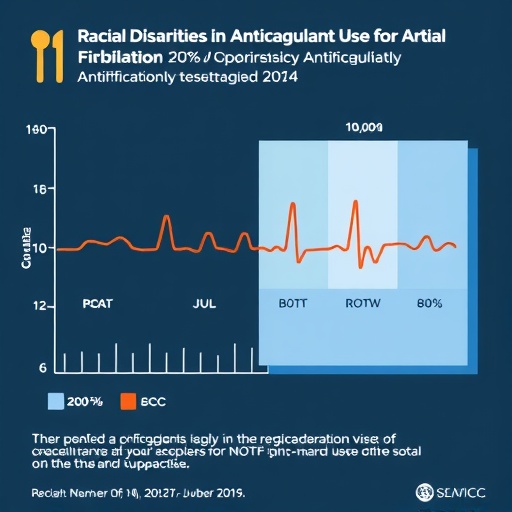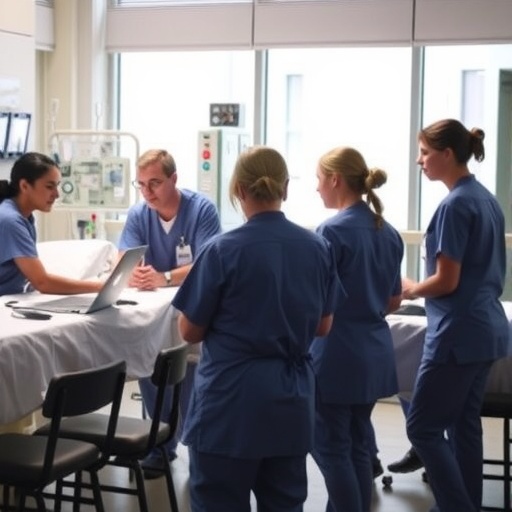CHAPEL HILL — Researchers at the University of North Carolina Lineberger Comprehensive Cancer Center and University of Wisconsin-Madison have demonstrated improved methods of capturing free-floating cancer cells that are cast-off from tumors, and circulating in the blood.
If these cast-off cells can be accurately counted, they could provide an additional way to track treatment or screen for disease.
"Based on previous research, we know that circulating tumor cells indeed can be used as a biomarker, and have prognostic significance, but the problem has been the sensitivity of the tests studied," said UNC Lineberger's Andrew Wang, MD, associate professor in the UNC School of Medicine Department of Radiation Oncology. "We set out to improve on both the sensitivity and the specificity of the test."
Using their test design, Wang and his collaborators counted circulating cancer cells in the blood of 24 patients undergoing treatment for head-and-neck, prostate, rectal or cervical cancer.
In the journal Clinical Cancer Research, researchers reported that by forcing cancer cells to slow down and developing stronger molecular traps for them, they could identify large numbers of the cells in cancer patients undergoing radiation therapy.
They also found that the numbers of circulating tumor cells dropped while patients were undergoing radiation therapy, and the numbers subsequently rebounded in those patients that ended up requiring additional treatment — suggesting that this technology could supplement other techniques for tracking the progress of treatment.
"Oftentimes, post treatment, we end up scanning patients frequently," Wang said. "Maybe the future is, instead of doing expensive scans, we can do a blood test, and if the test result shows no change, we leave them alone. If it suggests there may be trouble, we could do additional scans."
Scientists have recognized circulating tumor cells as potentially useful metrics for tracking a patient's disease for some time. But the cells are the proverbial needle-in-a-haystack, drowned out by billions of ordinary red blood cells and other cells found in the blood.
Wang's team created a test that forces the circulating tumor cells to start rolling, slowing them down. The cells are trapped using a series of three cancer-specific antibodies – proteins that tightly bind and hold onto the circulating tumor cells. To make the connection even stronger, the researchers developed a nanoscale structure shaped a little like a tree, with each branch tipped with an antibody. These individual branches can latch on to cancer cell that pass nearby.
"The cells are like barrels floating down Niagara Falls, and you're trying to throw hooks at them," Wang said. "Even if you hook them, they're hard to catch. We tried as strategy called 'multivalent binding,' where instead of using one hook, you use multiple hooks on one flexible nanoparticle, which has a tree-like structure. When one antibody engages with the cell, or the barrel, it induces the others to grab on as well."
The cell rolling and multi-tipped branches helped the researchers capture an average of 200 circulating tumor cells from each milliliter of a patient's blood.
"The absolute numbers of circulating tumor cells don't represent too much because there's too much variation individually, but the more important thing we found was the trend — how the numbers change over time upon treatment. So, for example, we've shown that the circulating tumor cells go down when the patients are responding really well to the radiotherapy," said the study's co-corresponding author, University of Wisconsin-Madison Professor of Pharmacy Seungpyo Hong.
Although the number of cells did not correlate with the stage of the cancer, the reduction in cells was correlated with successful radiation therapy. In two of the three patients that had recurring or persistent disease, circulating tumor cell numbers came back up.
Wang and his collaborators launched the startup company Capio Biosciences in 2015 to commercialize the technology, which they call CapioCyte.
"Our data suggest that we have a good chance of making circulating tumor cells a predictive biomarker or biomarker for surveillance for at least a few cancers, and that's always exciting," Wang said.
###
In addition to Hong and Wang groups, other authors included Ja Hye Myung, Sin-jung Park, and Kevan A. Tam, of the University of Illinois Department of Biopharmaceutical Sciences; Michael J. Eblan, Joseph M. Caster, Kyle Wang, Seth M. Miller, Colette Shen, Ronald C. Chen, Joel E. Tepper, and Bhishamjit S. Chera of UNC Lineberger and the UNC School of Medicine Department of Radiation Oncology; Michael J. Poellmann of the University of Wisconsin, Madison, School of Pharmacy; and Tian Zhang of the Duke Cancer Institute and Duke University Department of Medicine.
The study was funded by the National Institutes of Health, the National Science Foundation, and UNC School of Medicine Department of Radiation Oncology.
Adapted from a release by Eric Hamilton of the University of Wisconsin-Madison.
Media Contact
Laura Oleniacz
[email protected]
919-445-4219
http://cancer.med.unc.edu/
http://unclineberger.org/news/capturing-circulating-cancer-cells




